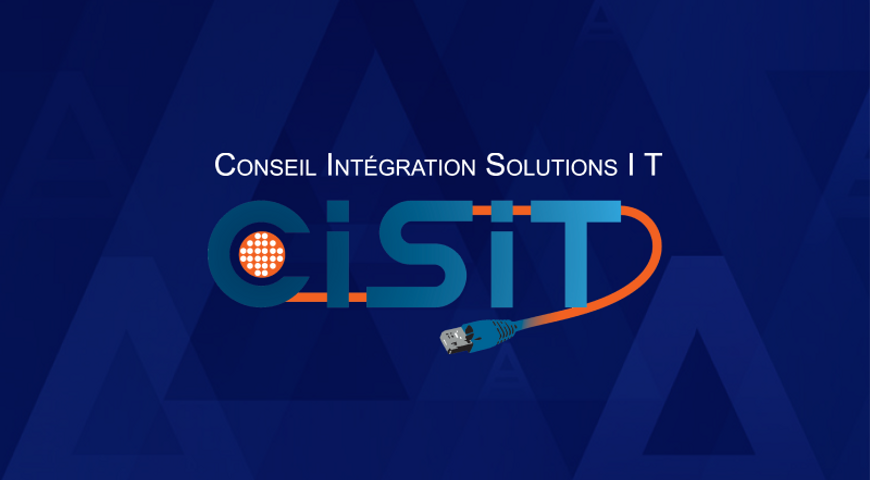
Google Workspace (formerly G suite) streamlines workplace operations with robust productivity tools, including email, spreadsheets, video conferencing, and cloud storage. The productivity suite also includes built-in security features to protect identities, applications and devices, and also includes a data loss prevention feature for Gmail and Google Drive.
However, the default protection offers limited flexibility and inadequate cybersecurity and data protection. For instance, Google Vault allows users to retrieve data only within a short timeframe. Although Google Workspace is widely used, a majority of users are unaware their company data is at risk. If your organization is struck by a disaster, it’s important to know that not all of your company data within Google Workspace can readily be restored.
If your company is unable to restore Google Workspace assets, there could be serious repercussions, including reputational and financial damage. Consequently, data loss exposes businesses to legal action, periods of downtime, operational disruption and lost revenue. To ensure comprehensive cyber protection and business continuity, your business will need additional layers of cyber protection to ensure data is securely backed up and can be reliably restored from Google Workspace.
This article provides awareness, best practices, and guidance to help small and medium-sized businesses perform efficient, reliable, and secure Google Workspace data restores. The key takeaways from this blog will equip your organization with a better understanding of Google’s built-in protection, help you know your risk of data loss, and inform your organization on today’s recovery options for Google Workspace data.
Understanding data loss in Google Workspace
Ideally, before your company decides to use Google Workspace tools, it’s important to know Google follows a shared responsibility model. In this model, Google is responsible for maintaining application uptime and ensuring the security, operations, and infrastructure of their services are met. This also means that all operational and contractual responsibilities related to user credentials and protection of Google Workspace data falls on the Google customer (your business).
Shared below are a few common factors that contribute to data loss in Google Workspace environments:
Human error
One of the most common causes of Google Workspace data loss is human error. This can be attributed to accidental deletion, accidental overwrites or even accidental sharing of files or folders with the wrong parties. For instance, users may not have proper training or understand best practices when it comes to using Google Workspace tools containing sensitive information, leading to users making unintentional missteps that result in data loss.
Ransomware intrusion
Ransomware attacks within Google Workspace environments can be particularly devastating and can prevent authorized users from accessing critical information. Moreover, even if the ransom is paid, there’s no way to be sure the decryption key will successfully help victims regain access to data or guarantee it will be restored.
Poor syncing
If a user is working on a document on their device and then attempts to sync their work to another device, the syncing process may not always be successful. If data synchronization fails, this can lead to sensitive information falling into the wrong hands or complete data loss.
Malicious insider threats
Although business leaders and organizations trust internal stakeholders to keep data secure, this isn’t always feasible. Unfortunately, cyberattacks involving insider threats do happen. These are intrusions where a malicious user with authorized access misuses their privileges to exploit systems and valuable data. Insider threats are incredibly hard to detect because these users already have authorized access to the system and can inconspicuously manipulate and delete data without sounding alarms.
With your organization’s cyber risk mounting and the likelihood of unforeseen data loss, it’s imperative to stay ahead of Google Workspace threats, educate employees, and institute a reliable data recovery solution.
Google Workspace’s built-in data recovery features
Google Workspace offers built-in data recovery features to help users recover lost data that may have been accidentally deleted or corrupted. Google’s data recovery capabilities can be used to restore files, emails, and information from Google Drive which enable the user to restore a previous version of a file.
Within Google Workspace Gmail, the built-in recovery lets you recover emails and you can choose to restore entire inboxes or specific email messages. For Google Drive data, the user can restore an earlier version of a word document, spreadsheet, or slide presentation — including deleted items from the trash bin or any other folder.
Google Workspace’s built-in data recovery limitations
It’s important to note that the built-in recovery provided by Google Workspace applies only to data from Google Drive, Gmail, and Calendar. Also, the built-in recovery is available only for repositories deleted or corrupted in the last 25 days — all data prior to that is not recoverable. Another drawback is that Google Workspace’s recovery cannot restore data from third-party applications.
The importance of third-party data recovery solutions
As businesses scale and the number of assets utilized, stored, and created rise, they quickly realize Google’s native data recovery won’t sufficiently protect sensitive data and ensure it can be restored when disasters strike.
Acronis encourages small and midsize organizations to explore third-party data recovery solutions that offer customizable recovery options, scale with your business, and reliably recover data. Third-party data recovery solutions provide better protection than Google’s built-in recovery and can recover data beyond the last 25 days.
Additionally, the purpose-built tools created by third-party recovery vendors are developed to safeguard data with comprehensive protection, including features such as encryption, to keep data secure from cybercriminals. Third-party recovery tools are far more reliable than Google’s built-in backup and recovery options and offer enhanced visibility into backup and restore environments.
Key features to look for in Google Workspace data recovery tools
When IT security professionals, business leaders, and stakeholders look for a data recovery tool for Google Workspace environments, there are several key areas to consider.
The scope of data recovery needs
Your business needs to consider the scope of your data in the event recovery efforts are needed following a cyber event or human error. The recovery tool should be able to recover data in a variety of forms, including videos, images, documents, and spreadsheets.
In addition to USB sticks, hard drives, and portable devices, the recovery solution should also be able to retrieve data from a range of storage devices. The type of endpoints and systems housing critical data is another factor to consider. Be sure the recovery solution is compatible with PCs, Macs, and mobile devices.
Ease of use and time to onboard
Time is of the essence during a cybersecurity or data loss event, making ease of use critical to regaining lost data and returning to normal business operations quickly. Recovery solutions with a user-friendly interface, clear navigation, and comprehensive instructions will help seamlessly guide security responders through the recovery process. When stakes are high, your business needs to eliminate complex tools that are time intensive and require highly skilled talent with deep technical backgrounds in order to carry out recovery efforts.
Robust encryption capabilities
Strong data encryption technologies will help improve protection of high value assets to secure them from hackers and malicious actors. Your organization will also want to protect their backup environments so that recovered data is stored in a location free from malware and other threats.
Responsive and expert customer support
Lastly, data recovery should have responsive, reliable, and knowledgeable customer support. A support team with deep recovery experience will able to help recover critical information and provide industry expertise in the event of a data recovery issue.
Steps to perform data recovery in Google Workspace
At Acronis, we’ve highlighted five key steps for recovering Google Workspace data.
Step one: Identify and inventory assets needing recovery
The initial step of data recovery is to identify and compile a list of the data assets that will need to be recovered. This can include documents, contacts, emails, or other data housed in Google Workspace.
Step two: Investigate your Google Workspace admin console
The second step is to select the “Data Recovery” prompt within the Google Workspace Admin to access the built-in tool. If you have a third-party recovery solution implemented, this step might be different and you will want to consult with your solution’s support team.
Step three: Choose the type of data that will need to be recovered
Next, you want to choose the type of data needed to be recovered. Options include the type of assets you compiled in step one.
Step four: Pick the date range
Enter the date range your organization would like the data to be recovered from.
Step five: Successfully recover the data
After selecting the desired data type and date range, click on “Recover” to begin the data recovery process. The recovered data will be available in the Google Workspace admin console.
Tips for preventing data loss in Google Workspace
As with any data storage system, it’s important to take a layered approach to security and implement several measures to mitigate risk of data loss, corruption, and compromise. Let’s dive into a few best practices for preventing data loss in google Workspace.
Create backup copies
Regularly take snapshots of data that rely on a third-party backup solution to create backup copies in a separate location — such as in an external hard drive or cloud storage environment.
Develop a comprehensive disaster recovery plan
Forming a comprehensive disaster recovery (DR) plan can help minimize the impact on business operations following a disaster. DR plans make it easier for businesses to recover quickly from natural disasters and cyberattacks by streamlining IT processes, reducing the risk of human error, and limiting disruptions to day-to-day operations. A well-rounded DR plan will outline a step-by-step plan on how your organization will respond to natural disasters, ransomware, server failures, and outages.
The data repositories within Google Workspace environments should be taken into consideration when forming your DR plan. In some cases, having a DR solution can help your business qualify for a cyber insurance policy by demonstrating your organization’s commitment to protecting critical data and developing predefined measures in case of an attack or disaster.
Remember to use multifactor authentication
Multifactor authentication (MFA), like two-factor authentication, adds an extra layer of security against account compromise and can greatly reduce your business’s cyber risk. Google Workspace provides MFA with 15+ authentication methods; however, you will also want to consider implementing MFA on third-party apps and accounts to leverage additional safeguards against hackers.
Key takeaways: Data recovery for Google Workspace admins
The role of the Google Workspace administrator handles several responsibilities, including managing, provisioning, and securing data housed withing Google Workspace infrastructure. For many IT security professionals who are the primary custodians of organizational data, there are several challenges to protecting business assets. These challenges include ensuring the availability of necessary tools and resources to recover sensitive data, monitoring systems proactively for potential risk and errors that could lead to data loss, and staying up to date on recovery plans.
Backup and disaster recovery solutions, like Acronis Backup for Google Workspace, provide regular backups of Google Workspace data, which can restore backed-up data swiftly to ensure businesses experience minimal downtime and mitigate the impact of disasters on their operations.
Additionally, Acronis Backup for Google Workspace provides holistic visibility over your Google Workspace data backups, offering detailed reports, notifications, and critical alerts on the health of backup operations. With deep visibility into these backups, your organization can enjoy peace of mind knowing your company’s Google Workspace data is protected and can be reliably restored in case of a disaster or cyber incident.
About Acronis
A Swiss company founded in Singapore in 2003, Acronis has 15 offices worldwide and employees in 50+ countries. Acronis Cyber Protect Cloud is available in 26 languages in 150 countries and is used by over 21,000 service providers to protect over 750,000 businesses.



